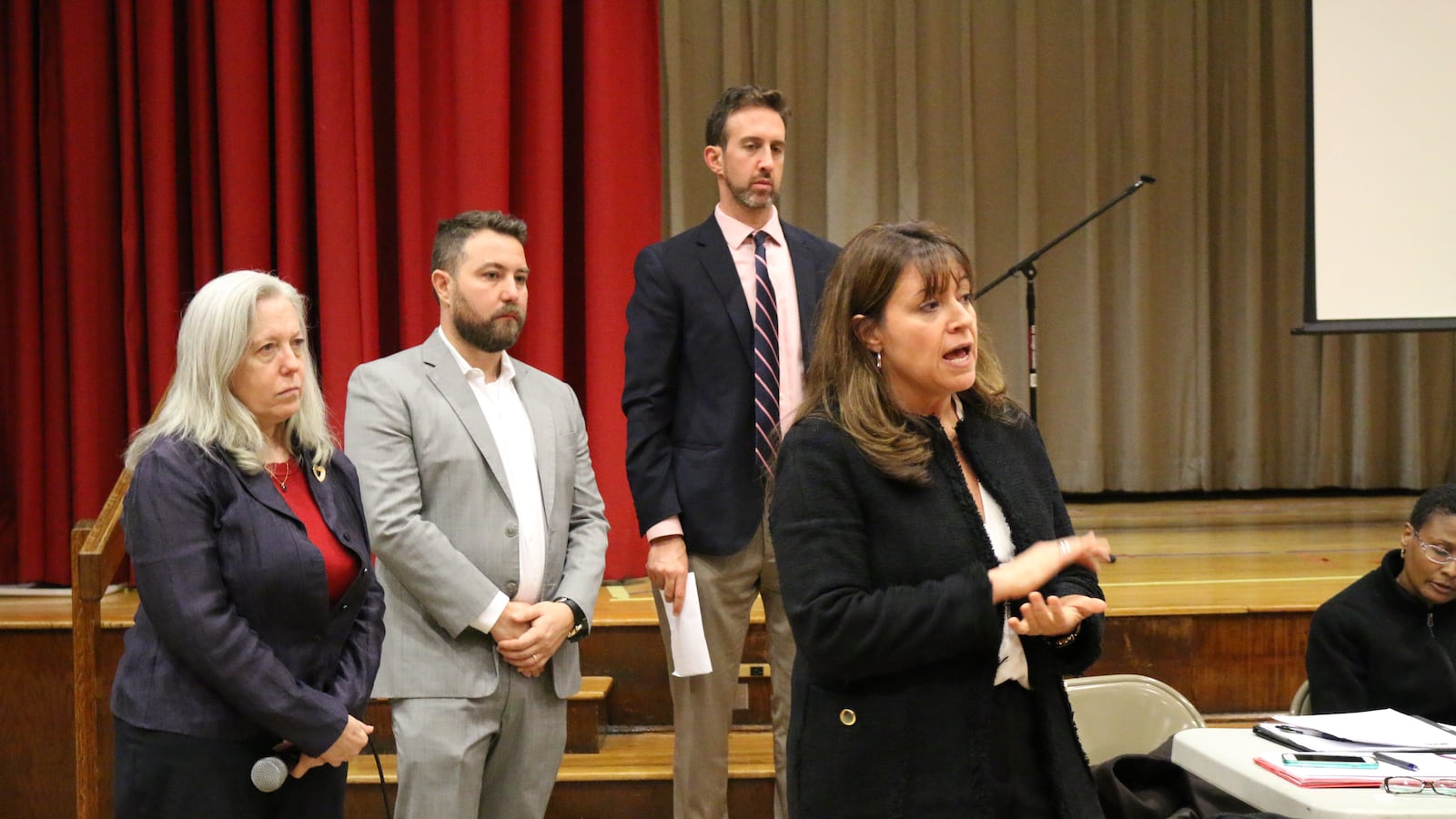On a block wedged between Harlem and the Upper West Side, two middle schools share a regal building. The similarities largely end there.
Mott Hall II is “screened” — meaning students are picked based on their previous academic performance. Students outpace the district average on state tests, and the school receives seven applications for every available seat.
Mostly separated on a different floor, the middle school at P.S. 165 accepts students from the zoned elementary school. Only 8 percent of middle school students passed state math tests last year, and enrollment in the upper grades is shrinking.
The education department is proposing to close the middle school at P.S. 165, which could give popular Mott Hall II room to grow. But P.S. 165 students would be entitled to opt into Mott Hall II without meeting its academic criteria, which has Mott Hall II parents worried that the performance of their school could erode if it is flooded with students who struggle academically.
“Shouldn’t they earn it? My daughter earned her right into Mott Hall,” said Sophia Fofana, whose daughter attends the school, at a public meeting held Wednesday to discuss the possible changes. “Mott Hall II is a rigorous school and, no disrespect to the teachers at [P.S. 165], but obviously they’re not the same and these kids are going to have a hard time.”
The controversy is similar to many that have erupted over the years among parents who want to protect their selective schools from changes that they fear could make them less exclusive. The debates also raise the larger question of whether some public schools should be permitted to choose their students — as a quarter of New York City middle schools now do — while others must enroll anyone who applies.
Both the proposal to shutter P.S. 165 and subsequently expand Mott Hall II are in the early stages. Neither has been formally proposed, let alone approved.
If the middle school is closed, about 100 current students there are entitled to enroll in a higher-performing alternative. Those students would not have to go through the normal screening process, which allows schools to sort through applicants based on their grades, test scores, interviews and other criteria.
A shift in the student body could also have unintended consequences when it comes to diversity. Enrollment at Mott Hall II largely mirrors the demographics of District 3, where it sits — a rarity in New York City, which has among the most segregated school systems in the country. P.S. 165, meanwhile, enrolls more black and Hispanic students.
“It works because there is a balance. And that’s what we signed up for,” said Shanti Menon, whose daughter is in seventh grade at the school.
Advocates for integration have argued that allowing schools to select students based on factors such as their academic performance or attendance records exacerbates segregation. But Mott Hall II is a unique case in that the school has been able to enroll a mixed student body. An influx of students from P.S. 165 could throw that off.
Parents describe Mott Hall II as the most diverse middle school in District 3, and most reflective of its demographic and economic averages. About 37 percent of students are Hispanic, 26 percent are black, 23 percent are white and 6 percent are Asian. The poverty rate is about 47 percent.
At P.S. 165, meanwhile, 81 percent of middle school students are black or Hispanic. With a poverty rate of 74 percent, the school serves considerably more poor students than the district average of about 48 percent.
Raven Snook, whose daughter attends Mott Hall II, said she picked the school precisely because of its diversity. While Snook is white, her husband is Puerto Rican.
“It will radically change the diversity levels, at least temporarily,” she said.
If the closure is approved, education department officials say it’s not a given that P.S. 165 students would enroll next door. Superintendent Ilene Altschul pointed out that P.S. 165 has a dual language program, and families may want to enroll in another similar school. Department officials added that many students come from another school district entirely, so they may look for options closer to home.
Altschul said the education department would work with each family to find the best fit for their child.
“Not every child will go to Mott Hall II,” she said at Wednesday’s meeting. “We are not taking the sixth and seventh grade and moving them to Mott Hall II.”
By December, officials expect to present a formal plan that would close the middle school at P.S. 165. The Panel for Education Policy, a citywide body, would vote on it in January. Any impacts on Mott Hall II should become clearer once that proposal is presented.
Still, the District 3 Community Education Council, which is made up of parent volunteers, has pressed the education department to start working with families who could be affected. Middle school applications are due Dec. 1, but the plans may not be finalized until well after families have made their decisions.
“They deserve to have an accurate picture of what the schools will look like,” said Kristen Berger, an education council member.
Education council members and parents have been frustrated with how quickly the changes could be approved, saying families in the Harlem area of District 3 have gotten short-shrift compared with their wealthier neighbors to the south. When the education department proposed to change the attendance zone at several elementary schools in the Upper West Side, parents dragged the debate on for more than a year.
“People in Harlem keep being told they’re not high enough of a priority to be afforded the depth of conversation that is afforded to white parents in District 3,” said Kim Watkins, the education council president. “It’s really disrespectful.”

